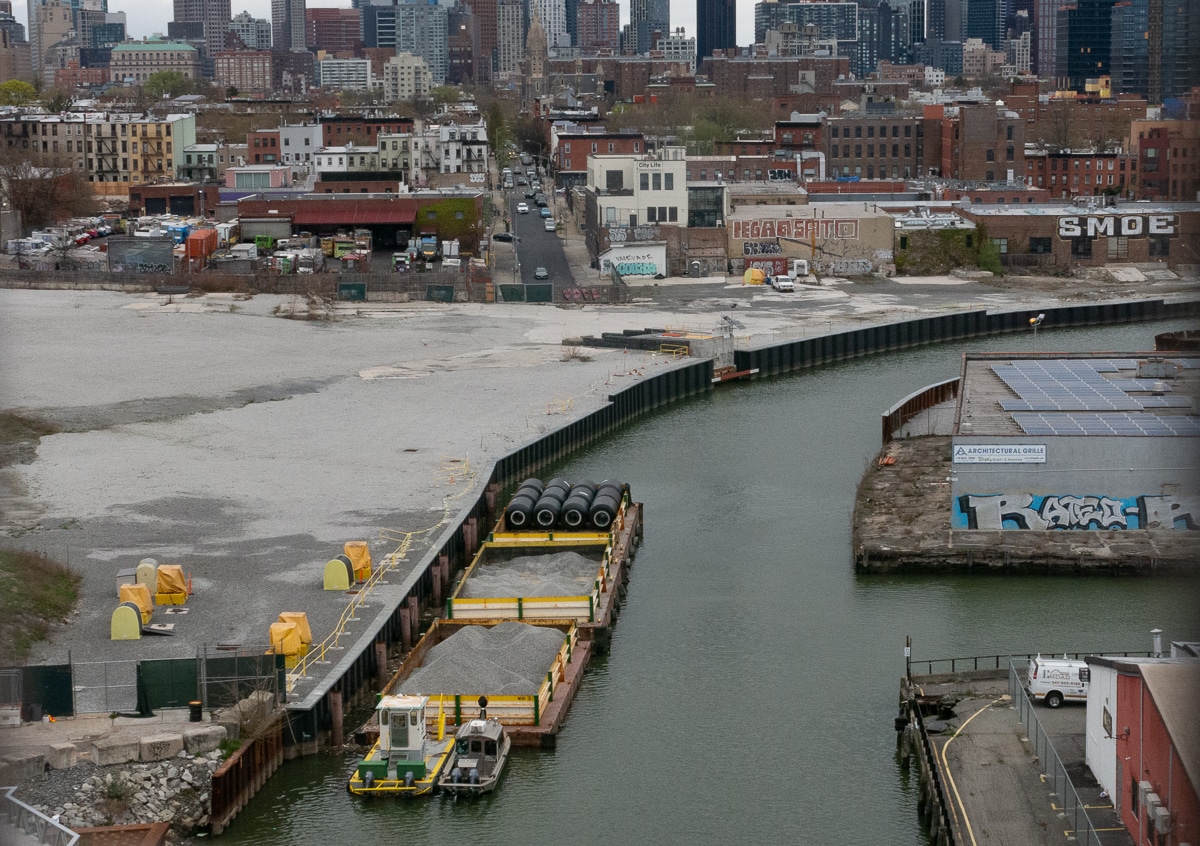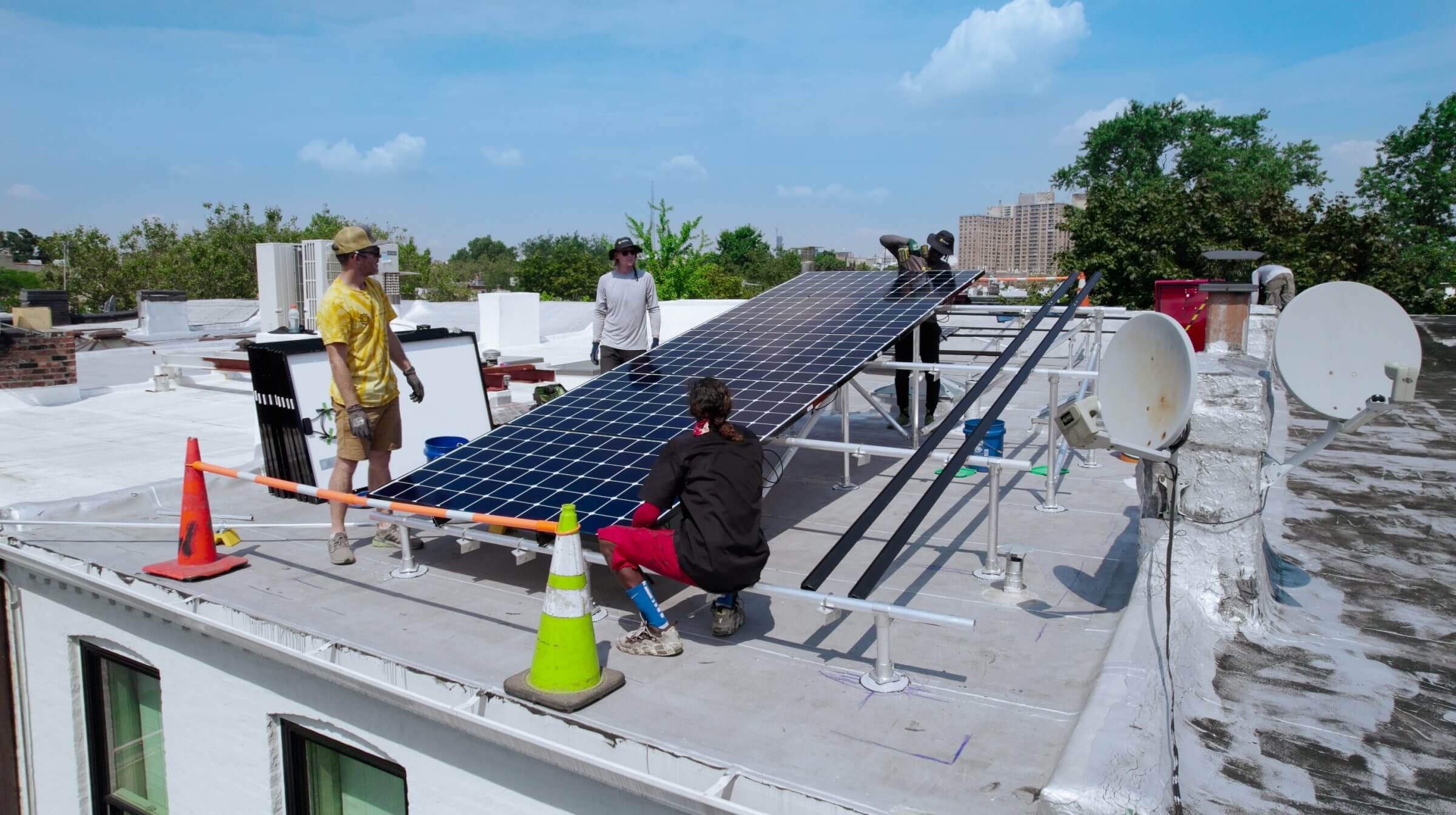MakerBot, Prepping for New 3D Printing Era, Moves Into 170,000-Square-Foot Factory
MakerBot is one of the powerhouses of the Brooklyn tech and maker scene — a movement that’s bringing back DIY with a tech-friendly twist. Founded in a Dean Street workshop in 2009, the company has experienced some ups and downs. But through it all, they’ve continued manufacturing in Brooklyn. This week, MakerBot entered a new era…
MakerBot is one of the powerhouses of the Brooklyn tech and maker scene — a movement that’s bringing back DIY with a tech-friendly twist. Founded in a Dean Street workshop in 2009, the company has experienced some ups and downs. But through it all, they’ve continued manufacturing in Brooklyn.
This week, MakerBot entered a new era with the opening of a facility at Sunset Park’s Industry City (which is about to get its own $1,000,000,000 makeover). The 170,000-square-foot industrial space houses 140-plus employees assembling MakerBot desktop 3D printers.
And it’s a step forward in MakerBot’s plan for the next era in 3D printing.
Image via Wikipedia
Home-Grown Global Phenomenon
MakerBot is a major player in global maker culture thanks to its line of desktop 3D printers. These devices — ranging in price from a few hundred dollars to a few thousand — allow people to manufacture their own parts and objects, rapidly increasing prototyping and design. It’s the first move toward fulfilling the dream of pressing a button and having the thing you want magically appear.
3D printers are a manufacturing game-changer. Doctors have used them to make new vertebrae. Fashion designers are using them to create remarkable new clothes. One startup uses 3D printers to build custom earbuds that are custom fitted to your ears.
MakerBot was one of the first companies to bring this kind of manufacturing capability to consumers. Their 2009 Cupcake CNC was just the second consumer-oriented desktop 3D printer released to market.
The company made 3D printing accessible to a whole new set of users — hobbyists, small batch manufacturers, and designers needing to quickly prototype products. MakerBot continues to lead the field, surpassing competitors like Massachusetts-based Form Labs and Ultimaker from the Netherlands. But MarkerBot is going to have to continue to innovate too, with companies like Voxel8 now offering multi-material printers.
How It Works
A MakerBot printer works sort of like an extremely elaborate hot glue gun. It takes in plastic, melts it, and pushes it out. The plastic hardens as it cools, and the machine layers more melted plastic on top, building up the object until it is complete.
A Bumpy Path
While MakerBot has hopes of putting a 3D printer in every home, kinks in the manufacturing process and design have delayed a total public embrace of the technology. One of the company’s printers, the Fifth Generation MakerBot Replicator, was released with a faulty extruder — the crucial component that pushes out the melted plastic. The extruder problem even prompted an investor lawsuit against their parent company over misleading information.
This happened just a year after MakerBot was purchased for $403,000,000 by commercial 3D printing giant Stratsys — who prints expensive, industrial things like air plane components and human exoskeletons.
MakerBot’s co-Founder Bre Pettis then stepped down from his role as CEO and into a new gig at Stratsys’s innovation group (he now helms spinoff Bold Machines). He was replaced by executive Jenny Lawton who’d worked in MakerBot’s business side since 2011. But Lawton didn’t last long. In March, she was replaced by Jonathan Jaglom, previously head of Stratsys’ Asia business.
After just a few weeks in the position, Jaglom laid off a fifth of MakerBot’s staff and closed down all of their retail stores in an effort to streamline the business.
Brooklyn the Brand
You might think that a company trying to trim the fat wouldn’t want to keep their manufacturing in Brooklyn — where rent for an Industry City space like this one runs between $15 to $35 per square foot. With 170,000 square feet, the cost adds up.
But as MakerBot Plant Manager Diana Pinkus said at the recent Make It In Brooklyn Summit, “Brooklyn is itself a brand and it became a part of the MakerBot brand. And vice versa. MakerBot is part of Brooklyn.”
The old MakerBot factory was too small to house all parts of the manufacturing process. Photo by Louis Seigal for MakerBot
The Plan for Total Domination
But the new factory will do more than just keep MakerBot’s Brookyn cred. Parent company Stratsys is doubling down on the idea that future profits will be built by selling a larger volume of printers at a lower cost. They’re betting that new innovations in design, materials and printer manufacturing will make making a MakerBot cheaper.
The less expensive the retail price, the greater the market opportunity becomes. And that anticipated tsunami of sales means more printers to be manufactured. And to do more manufacturing, they needed a bigger factory.
Though MakerBot’s new facility is just a few blocks away from their old one, it brings their production under one roof, theoretically making production more efficient.
As MakerBot grows into their new home and new plans, we’ll be keeping an eye on the progress.
If you want to know more:
Behind the Scenes of MakerBot’s New Brooklyn Factory [Curbed]
Despite Recent Cuts, MakerBot Opens Bigger Brooklyn Factory [Crain’s]
MakerBot Doubles Production Capacity With New 170,000 Square Foot Factory [3D Print]
MakerBot Focuses on QA with New 3D Printer Factory in Brooklyn [3D Printing Industry]
Manufacturing in Brooklyn Panel [Make It In Brooklyn]
The Real Reason Stratsys Bought MakerBot [Forbes]
MakerBot Opens New Factory at Brooklyn’s Industry City [Eagle]
Rendering at top via Industry City
Photo by Louis Seigal for MakerBot
MakerBot employees assemble a MakerBot Replicator Mini Compact 3D Printer
Jonathan Jaglom, MakerBot CEO. Photo by Max Touhey for Curbed
Industry City. Photo by Max Touhey for Curbed
















What's Your Take? Leave a Comment